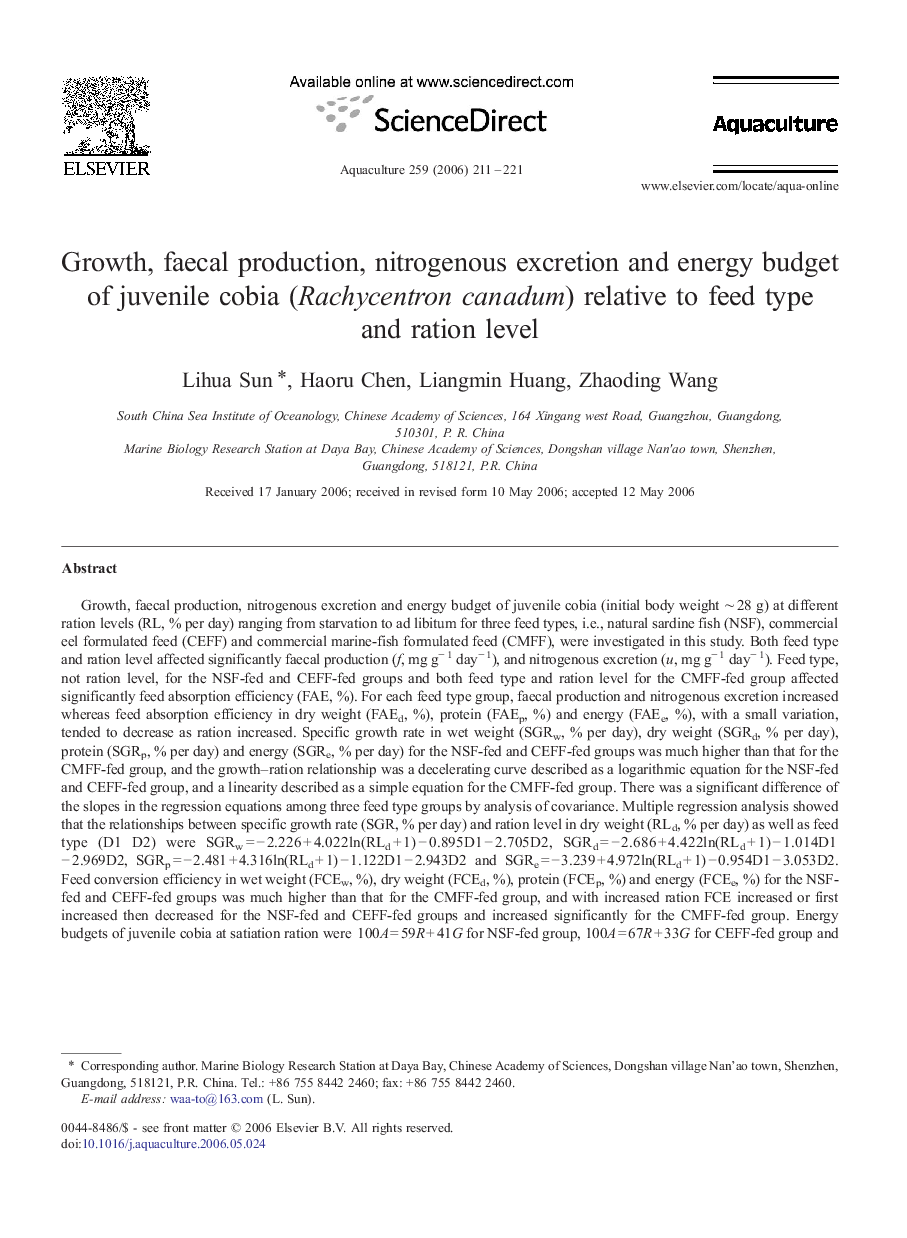| Article ID | Journal | Published Year | Pages | File Type |
|---|---|---|---|---|
| 2425783 | Aquaculture | 2006 | 11 Pages |
Growth, faecal production, nitrogenous excretion and energy budget of juvenile cobia (initial body weight ∼ 28 g) at different ration levels (RL, % per day) ranging from starvation to ad libitum for three feed types, i.e., natural sardine fish (NSF), commercial eel formulated feed (CEFF) and commercial marine-fish formulated feed (CMFF), were investigated in this study. Both feed type and ration level affected significantly faecal production (f, mg g− 1 day− 1), and nitrogenous excretion (u, mg g− 1 day− 1). Feed type, not ration level, for the NSF-fed and CEFF-fed groups and both feed type and ration level for the CMFF-fed group affected significantly feed absorption efficiency (FAE, %). For each feed type group, faecal production and nitrogenous excretion increased whereas feed absorption efficiency in dry weight (FAEd, %), protein (FAEp, %) and energy (FAEe, %), with a small variation, tended to decrease as ration increased. Specific growth rate in wet weight (SGRw, % per day), dry weight (SGRd, % per day), protein (SGRp, % per day) and energy (SGRe, % per day) for the NSF-fed and CEFF-fed groups was much higher than that for the CMFF-fed group, and the growth–ration relationship was a decelerating curve described as a logarithmic equation for the NSF-fed and CEFF-fed group, and a linearity described as a simple equation for the CMFF-fed group. There was a significant difference of the slopes in the regression equations among three feed type groups by analysis of covariance. Multiple regression analysis showed that the relationships between specific growth rate (SGR, % per day) and ration level in dry weight (RLd, % per day) as well as feed type (D1 D2) were SGRw = − 2.226 + 4.022ln(RLd + 1) − 0.895D1 − 2.705D2, SGRd = − 2.686 + 4.422ln(RLd + 1) − 1.014D1 − 2.969D2, SGRp = − 2.481 + 4.316ln(RLd + 1) − 1.122D1 − 2.943D2 and SGRe = − 3.239 + 4.972ln(RLd + 1) − 0.954D1 − 3.053D2. Feed conversion efficiency in wet weight (FCEw, %), dry weight (FCEd, %), protein (FCEp, %) and energy (FCEe, %) for the NSF-fed and CEFF-fed groups was much higher than that for the CMFF-fed group, and with increased ration FCE increased or first increased then decreased for the NSF-fed and CEFF-fed groups and increased significantly for the CMFF-fed group. Energy budgets of juvenile cobia at satiation ration were 100A = 59R + 41G for NSF-fed group, 100A = 67R + 33G for CEFF-fed group and 100A = 83R + 17G for CMFF-fed group, where A is assimilated energy R is energy spent in metabolism and G is energy stored as growth.
